Karisssa/iStock/GettyImages
Garlic is a member of the lily family, though you don't usually associate it with flowers after that first, pungent whiff of its distinctive scent. Known affectionately as the stinking rose, garlic can be harsh enough to ward off the undead or sweet enough to spread on a hot, crusty bialy. What garlic should never be is bitter. Understand the basics of how to choose, cook and store garlic, so that sneaky bitter taste will never come back to bite you.
Choose the freshest possible whole heads of garlic. The color should be clean and white with no visible dark spots or mold. The papery outer coating of the garlic should be tight and crisp, so that the garlic looks like a well-wrapped gift.
Cook with chopped, minced, smashed or pressed garlic immediately rather than letting it sit. Garlic gets its flavor from diallyl disulfide, which is a natural oil that turns bitter when exposed to the air. The finer the pieces of garlic, the more oil is released, so a whole clove can sit for longer than pressed garlic before turning bitter.
Saute garlic slowly over low heat to release the flavor. When garlic is overcooked, it turns bitter. When cooking garlic with other ingredients – such as celery and onions – do not add the garlic until the other vegetables have softened.
Store garlic in a cool, dry place. Humidity can encourage mold, and even the refrigerator can be too moist an environment. Garlic does well when placed in a clay plant pot and set into a pantry or cupboard that is away from the heat of the oven and the steam from a coffee maker.
Busting the Bitter Garlic Problem
Old garlic that's starting to sprout may taste a little bitter compared to a younger clove. The good news is that the entire clove doesn't taste bitter, but the green sprout or "germ" within it can taste bitter when cooked because it burns faster than the other parts of the garlic. To eliminate this potential problem, slice sprouted garlic cloves in half vertically for better access to the sprout or germ inside. Use the tip of a knife to remove the entire green germ from each garlic clove half and you've removed the bitterness.
Related Articles
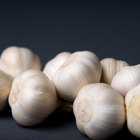
How to Blanch and Peel Garlic
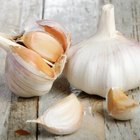
How to Get Rid of Garlic Body Odor
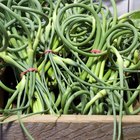
How to Freeze Garlic Scapes
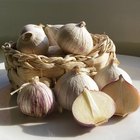
How to Preserve Garlic in Olive Oil
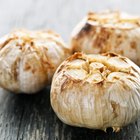
The Calories in Roasted Garlic

How to Cook With Garlic Salt

How to Eat Wild Onions
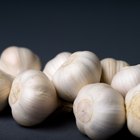
How to Brine Garlic Cloves
What Is the Cooking Substitution for ...

How Many Calories Are in Garlic Chicken ...
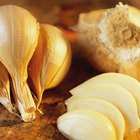
Garlic for Psoriasis

The Difference in Fresh or Dry Oregano

How to Remove a Cardamom Seed From a Pod

How to Make Rubbed Sage

How to Oven-Dry a Bitter Gourd

How to Store Shallots

Can You Still Use Basil That Goes a ...
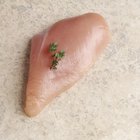
How to Make Garlic Chicken

Can Leftover Onion Turn Toxic Overnight?
Can You Eat Ginger Peel?
References
Tips
- Slice green shoots off of garlic cloves rather than discarding the whole head or individual clove, because the presence of a shoot does not mean that the garlic has turned bitter.
Writer Bio
Brynne Chandler raised three children alone while travelling, remodeling old homes, taking classes at the Unioversity of California Northridge and enjoying a successful career writing TV Animation. Her passions include cooking, tinkering, decorating and muscle cars. Brynne has been writing fun and informative non-fiction articles for almost a decade. She is hard at work on her first cookbook, which combines healthy eating with science-based natural remedies.